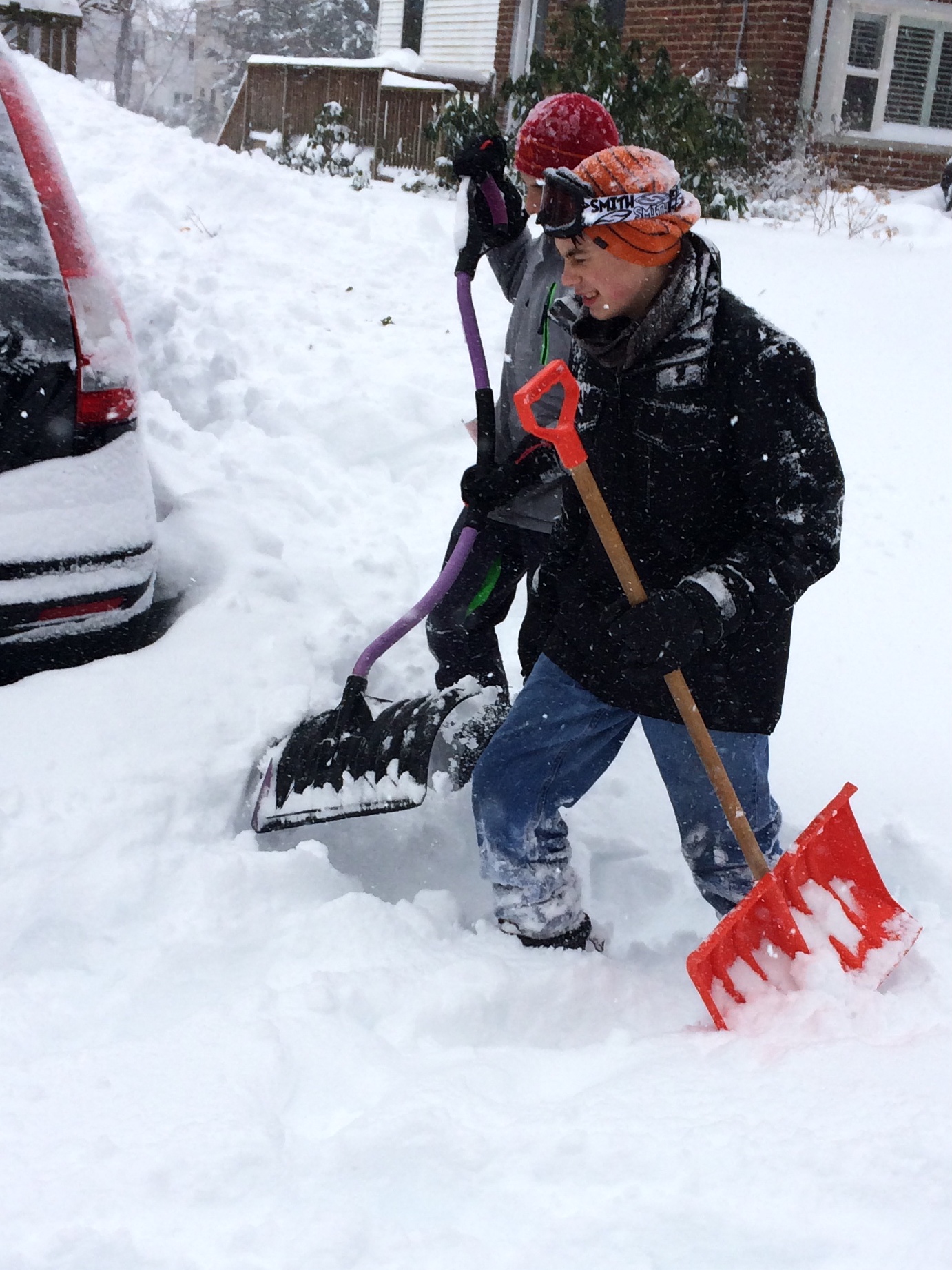WASHINGTON — Streets and sidewalks throughout the D.C. region are covered with ice and snow, and most will remain that way for the rest of the week.
So unless your running shoes come equipped with ice cleats or snow chains, you’re going to have find a few alternatives when it comes to working out.
Personal trainer Josef Brandenburg says that isn’t such a bad thing. In fact, he says winter is a great time to take a break from your normal workout routine or sport of choice and cross-train.
“Can you imagine what would happen to an NFL team if they had no time off? By the time you got to the second year, you probably would have to find an entire new team because everybody would be destroyed and injured and unable to play,” says Brandenburg, of True 180 Fitness.
“Basically, your body just needs a change of pace; it needs time to heal from sport.”
In addition to helping prevent injuries, cross-training for six to 10 weeks out of the year also provides an opportunity to improve your skills. For example, Brandenburg says long-distance runners and cyclists typically don’t dedicate much training time to strength and power. Taking a break from endurance training allows them to do so.
“These are the things you’re going to be standing in the way of you going to the next level and setting your next PR. So this is an opportunity for you to focus on developing those qualities while you let everything else heal,” Brandenburg says.
That doesn’t mean you need to completely abandon your sport. Brandenburg says runners should still run two to three days a week at a relatively easy pace to maintain a base. Cyclists can continue to go out on rides. However, Brandenburg suggests working in weight training, yoga, swimming and other activities on the “off” days to build new muscle and skills.
“Swimming for a runner, it’s a great way to keep your conditioning up and not put a lot of stress on your joints as well,” he says.
The winter cross-training season is also a great opportunity to set goals or plan out rides and races for the spring season.
“Don’t dread the offseason; embrace it,” Brandenburg says.
Want to get started on your cross-training routine? Follow Bandenburg’s advice and workout:
Tips: Many assume that strength training for endurance athletes should center around increasing muscular endurance by doing sets with a high number of reps. The job of the strength and conditioning coach is to provide what the sport doesn’t. This is why the reps are low (most exercises are only six reps). This is to emphasize strength and high tension.
You will also notice that the lower-body exercises are mostly single-leg exercises because running and cycling are single leg activities. The muscles of your hips, thighs, feet and core work differently when only one foot is on the ground.
How to read the workout: Items listed as 1A, 1B, 1C are to be done in a mini circuit. Complete the first set of 1A, then the first set of 1B, followed by the first set of 1C. Then repeat the circuit starting at 1A before moving onto the 2s or the 3s.
Also, there is an A and B day; they have the same “ramp up.” I would like you to alternate these workouts and progress them. For example, in Week 1, on Monday do A, Wednesday B, Friday A. In Week 2, Monday would be B, Wednesday A, Friday B. You can continue making progress on this for four to six weeks. Track your loads.
Click on the links for video demonstrations of the workout.
| The RAMP UP — 15 min | Sets | Reps | Tempo | Rest |
| 1A. Foam rolling | 1 | 1 | 5 minutes | None |
| 1B. ½ kneeling ankle mobilization | 1 | 10 each | Slow | None |
| 1B. Pretzel 1.0 | 1 | 1 each | 30 seconds | None |
| 1C. Pretzel 2.0 | 1 | 1 each | 30 seconds | None |
| 1D. ½ kneel KB halo | 1 | 3 each leg | Slow | None |
| 1E. Inchworm | 1 | 5 | Slow | None |
| 1F. Side lunge | 1 | 10 each | Moderate | None |
| 1G. Squat to Stand | 1 | 5 | Slow | None |
| 1H. 4 Way miniband walk | 1 | 5 each | Slow | None |
Day A
| Strength, Core and Power — 30 min | Sets | Reps | Tempo | Rest |
| 2A. ½ kneeling anti-rotation press | 3 | 12 each | Slow | 30 seconds |
| 2B. Kettlebell swing | 3 | 12 each | Explosive | 30 seconds |
| 2C. Pretzel 1.0 | 2 | 1 each | 30 seconds | None |
| 3A. Single leg dead lift | 4 | 6 each | Moderate | 30 seconds |
| 3B. Max Push up* | 4 | 6 | Moderate | 30 seconds |
| 3C. Offset squat | 4 | 6 each | Moderate | 30 seconds |
| 3D. SA cross-body row | 4 | 6 each | Moderate | 30 seconds |
*Make these push ups hard for six reps with integrity and full range of motion. Elevate your feet or add weight to your back.
Finisher for conditioning: None. If you are still doing a minimal amount of rowing, running or cycling to maintain your base, then we don’t need to add extra conditioning work.
Day B
| Strength, Core and Power — 30 min | Sets | Reps | Tempo | Rest |
| 2A. Pike with sliders | 3 | 12 | Slow | 30 seconds |
| 2B. ½ kneeling MB throw | 3 | 12 each | Explosive | 30 seconds |
| 2C. ½ kneeling ankle mobilization | 2 | 10 each | Slow | None |
| 3A. Single leg squat from box | 4 | 6 each | Moderate | 30 seconds |
| 3B. Single arm overhead press | 4 | 6 each | Moderate | 30 seconds |
| 3C. Slider reverse lunge | 4 | 6 each | Moderate | 30 seconds |
| 3D. Pull up* | 4 | 6 each | Moderate | 30 seconds |
*I’ve linked to a video on a great entry-level point for this amazing exercise. We like band-assisted pull ups as the usual next step from this exercise. Focus on full range of motion and control on each rep. No kipping or wiggling.
Finisher for conditioning: None. If you are still doing a minimal amount of rowing, running or cycling to maintain your base, then we don’t need to add extra conditioning work.







